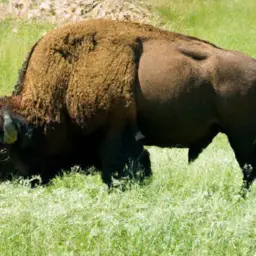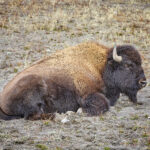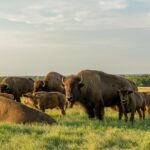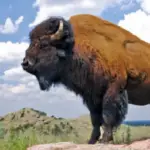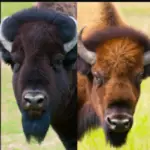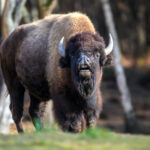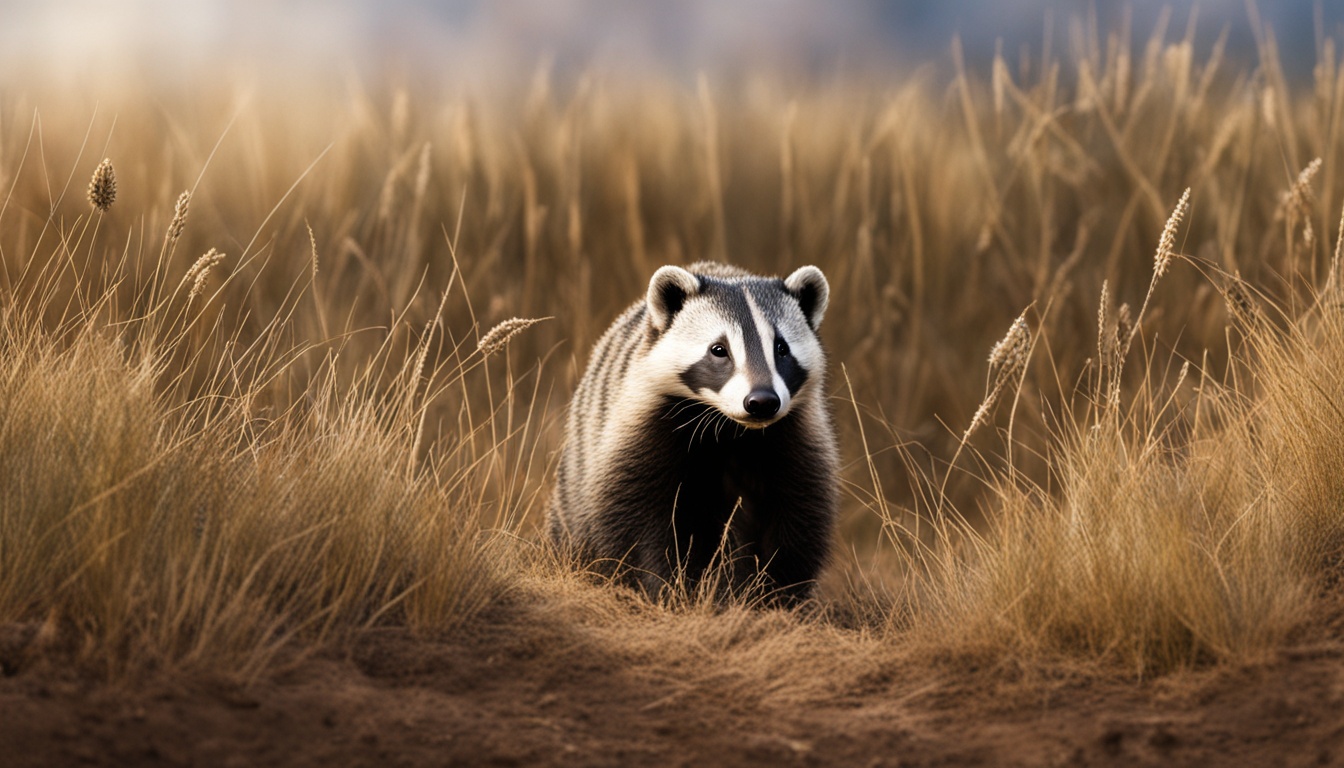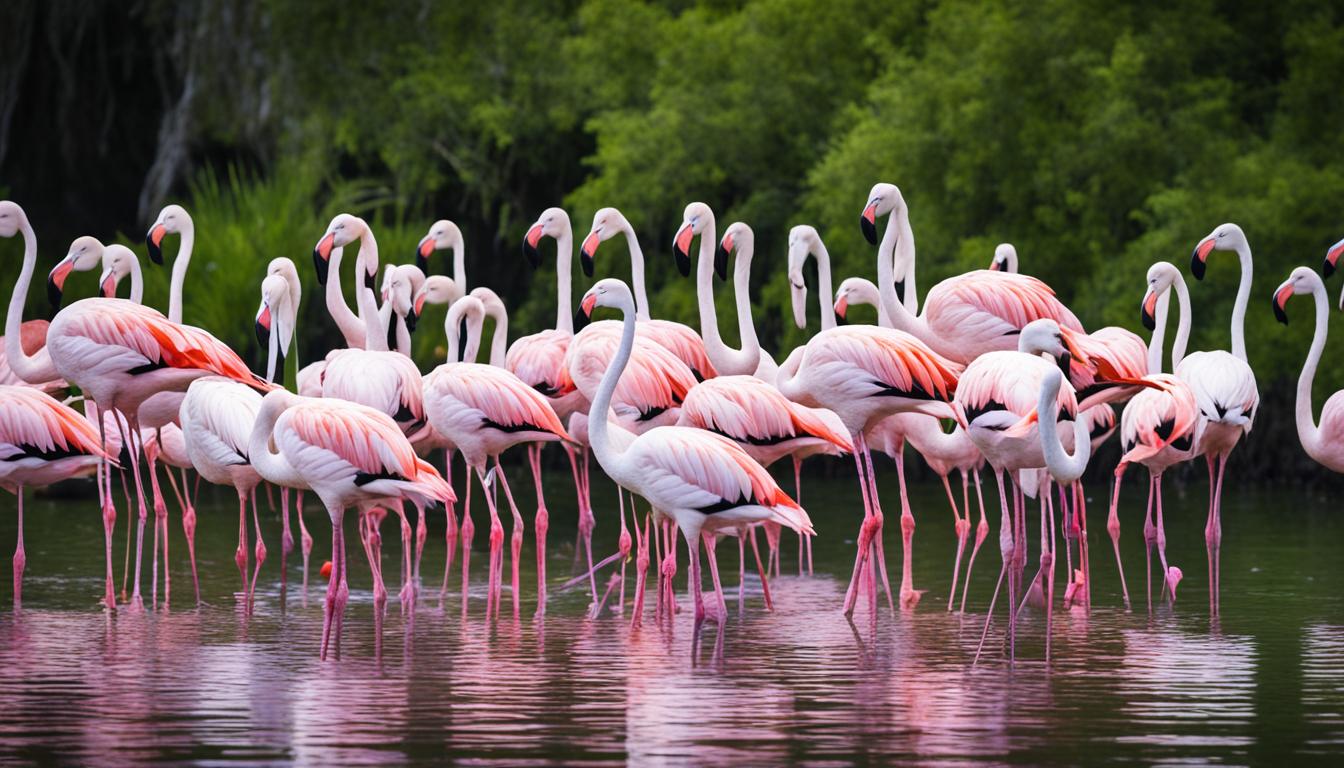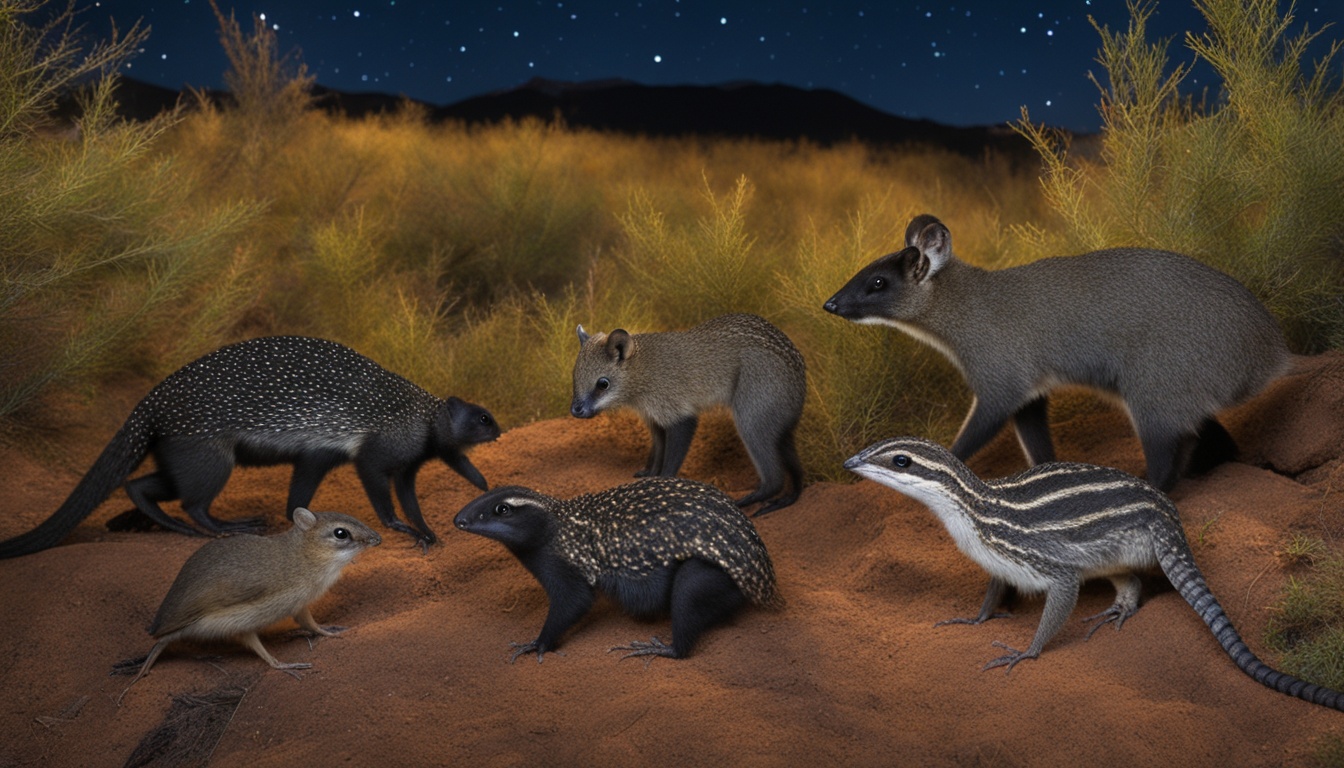From their grazing habits to their contribution to soil fertility, this article will explore the various ways in which bison positively influence the ecosystem and why their conservation is vital for the health and balance of nature.
The Role of Bison in Biodiversity
Key contributions of bison to ecosystem diversity
Bison play a crucial role in maintaining biodiversity within ecosystems. These majestic animals are known for their ability to create and sustain diverse habitats, benefiting a wide range of plant and animal species.
Their activities, such as grazing and wallowing, have profound effects on vegetation, soil fertility, water retention, and even land formation. As we delve into the various aspects of bison’s impact on the ecosystem, it becomes evident why these magnificent creatures are considered keystone species.
Preservation of various species through bison’s activities
The activities of bison have a remarkable influence on the preservation of various species within ecosystems. By grazing on grass and other vegetation, bison help to control the growth of dominant plant species, preventing them from overshadowing smaller plants and creating space for a diverse range of plants to flourish.
This, in turn, provides ample food sources and habitats for numerous other species, including insects, birds, and small mammals. Without the presence of bison, these delicate ecosystems would face the risk of becoming monotonous and ecologically imbalanced.
Bison as Keystone Species
Understanding the concept of keystone species
A keystone species is a term used to describe a species that has a disproportionate impact on its environment relative to its abundance. In other words, keystone species have a crucial role in maintaining the balance and structure of the overall ecosystem, even if their population size is relatively small. Their influence extends far beyond their own direct interactions within the ecosystem, making them essential for its proper functioning.
Reasons why bison are considered as keystone species
Bison are considered keystone species due to the unique and far-reaching effects of their activities on the ecosystem. Their grazing behavior, for instance, creates a mosaic of vegetation patches of varying heights, which promotes biodiversity by providing different microhabitats for plants and animals.
Additionally, bison’s wallowing behavior helps create depressions in the landscape, enhancing water retention and creating breeding grounds for amphibians and other aquatic species.
These combined effects make bison a pivotal species in maintaining the intricate web of life within their respective ecosystems.
Impact of Bison on Plant Life
Bison’s effect on vegetation growth
Bison exert a significant influence on vegetation growth through their grazing behavior. As they consume grass and other plant species, they play a vital role in controlling the dominance of certain plants.
By preventing the unchecked growth of dominant species, bison promote a more diverse plant community, allowing less competitive but equally important plants to thrive. This, in turn, attracts a broader range of pollinators and herbivores, contributing to the overall biodiversity of the ecosystem.
Role in seed dispersal
In addition to their grazing activities, bison also contribute to the dispersal of plant seeds. As they move across the landscape, the seeds of various plant species often get attached to their fur or hooves. When bison eventually shed these seeds or defecate them in different areas, they serve as “planters” for new vegetation. This dispersal mechanism not only aids in the colonization of new areas but also ensures the genetic diversity and resilience of plant populations. Without the help of bison, the dispersal of these seeds would be limited, hindering the establishment of new plant communities.
Bison and Soil Fertility
How bison contribute to soil health
Bison’s activities have a profound impact on soil health and fertility. Their grazing behavior helps in nutrient cycling by creating a constant supply of organic matter through the deposition of dung. The breakdown of this organic matter by decomposers, such as fungi and bacteria, enriches the soil with essential nutrients, making it more fertile and conducive to plant growth. Furthermore, bison’s hoof action aerates the soil, improving its structure and allowing for better water infiltration.
Impact of bison’s activities on soil composition
Bison play a critical role in shaping the composition of the soil through their wallowing behavior. As bison roll in wallows, they create depressions in the ground, exposing bare soil. This disruption exposes new areas to sunlight, promoting the growth of different types of vegetation. Additionally, these wallows often retain water, facilitating the establishment of wetland plants and providing habitats for a diverse range of aquatic species. The unique combination of grazing and wallowing activities not only enriches the soil but also contributes to the formation of distinct ecological niches within the ecosystem.
Bison’s Role in Shaping Landscapes
Bison’s influence on land formation and features
The activities of bison have a significant influence on the physical landscape of an ecosystem. Through their constant grazing and trampling, they create a distinct patchwork of vegetation, leading to a mosaic-like pattern of tall and short grasses across the landscape. This, in turn, affects the availability of open spaces, influencing the behavior and movement patterns of other species. Moreover, bison’s wallowing behavior can shape the land by creating depressions and altering the flow of water, ultimately contributing to the formation of wetlands and influencing the water cycle within an ecosystem.
Example of landscapes shaped by bison activities
One notable example of the landscapes shaped by bison activities is the American Great Plains. Historically, vast herds of bison roamed these grasslands, exerting their influence on both the vegetation and the physical characteristics of the land. The constant grazing and trampling of the bison created a diverse grassland ecosystem with variations in height, plant density, and soil composition. These grasslands were not only essential for the survival of bison but also provided habitats for numerous other species, including pronghorns, birds, and insects. The disappearance of bison from these landscapes has had far-reaching implications for the overall structure and functioning of the ecosystem.
Bison and Water Cycle
Bison’s contribution to a healthy water cycle
The presence of bison in an ecosystem is crucial for maintaining a healthy water cycle. Through their grazing activities, they help prevent the dominance of certain plant species that may hinder water infiltration and evapotranspiration. By promoting a mosaic of vegetation patches, bison ensure that rainfall is absorbed and stored more efficiently within the ecosystem. This water retention not only benefits the vegetation itself but also provides a vital water source for other organisms, including insects, amphibians, and birds. In this way, bison play a vital role in maintaining the overall hydrological balance of their habitat.
Importance of bison in promoting water retention in soil
Bison’s wallowing behavior plays a key role in promoting water retention in the soil. As they create depressions by rolling in mud or compacting the soil, these wallows can temporarily hold water, especially during the rainy seasons. These water-filled wallows act as small reservoirs, ensuring access to water for both terrestrial and aquatic species during times of scarcity. Additionally, these depressions become breeding grounds for amphibians and provide essential moisture for seed germination. In the absence of bison, the loss of these wallows would disrupt the water cycle and significantly impact the availability of water resources for the diverse array of species within an ecosystem.
Bison’s Impact on Other Animal Species
Influence of bison on wildlife populations
The presence of bison has a significant influence on the populations of other wildlife species within an ecosystem. By creating and maintaining diverse habitats through their grazing and wallowing activities, bison provide essential resources for numerous animal species. The varied vegetation structure resulting from their activities supports a wide range of foraging strategies and niche requirements, allowing different herbivores and insectivores to coexist. Furthermore, the availability of water in bison wallows attracts amphibians, reptiles, and a multitude of invertebrates, thus enhancing biodiversity and supporting the overall resilience of the ecosystem.
Role in the food chain
As a herbivorous species, bison occupy a crucial position in the food chain. They consume vast amounts of grass and other vegetation, making them an abundant source of food for predators such as wolves and bears. The interaction between bison and these predators has shaped the evolutionary history of both species, leading to a delicate balance within the ecosystem. Furthermore, the carcasses of bison provide nutrients for scavengers and decomposers, ensuring that no resources go to waste. The complex web of interactions created by the presence of bison in the ecosystem highlights their pivotal role in maintaining the overall stability and functioning of the food chain.
Climate Change and Bison
How bison can help mitigate climate change
Bison can play a role in mitigating climate change through their grazing activities. As they graze on grass and vegetation, they prevent the buildup of excessive biomass, which can become fuel for wildfires. By reducing the risk and severity of wildfires, bison indirectly contribute to carbon sequestration by preserving the existing carbon stocks within the ecosystem. Additionally, the mosaic-like pattern of vegetation created by bison grazing can enhance carbon capture by favoring the growth of different plant species with varying carbon storage capacities. By promoting a diverse and productive ecosystem, bison have the potential to support climate change mitigation efforts.
The effect of climate change on bison populations
While bison can potentially help mitigate climate change, they are also susceptible to the impacts of this global phenomenon. Changing climatic conditions, such as altered rainfall patterns and increased frequency of extreme weather events, can affect the availability and quality of vegetation for bison. These changes may lead to shifts in their distribution and grazing patterns, potentially disrupting their natural behaviors and habitats. Additionally, climate change can also influence the prevalence and transmission of diseases within bison populations. Therefore, it is crucial to consider climate change in the management and conservation efforts of these iconic species.
Threats to Bison and Their Impacts on Ecosystems
Risks and challenges faced by bison
Bison populations face various threats, which have direct implications for the ecosystems they inhabit. Habitat loss and fragmentation due to human activities, such as agriculture and urbanization, restrict the movement and availability of suitable grazing areas for bison. Furthermore, the historical overhunting of bison has greatly reduced their numbers and genetic diversity, making them more vulnerable to diseases and other environmental pressures. Invasive species, climate change, and the encroachment of human infrastructure are additional challenges that bison populations face, highlighting the need for conservation action.
Potential effects on ecosystems if bison populations decline
The decline of bison populations can have significant impacts on ecosystems. Without the grazing and wallowing activities of bison, dominant plant species may outcompete others, reducing biodiversity and altering the structure of plant communities. This can have cascading effects on herbivores and other dependent species, leading to population declines and potential extinctions. The loss of bison’s influence on soil fertility and water retention may further disrupt nutrient cycling and hydrological processes, impacting the overall health and resilience of the ecosystem. Therefore, the preservation of bison populations is crucial for maintaining the robustness and functioning of ecosystems.
Does the Way Bison Sleep Impact Their Role in the Ecosystem?
The sleeping habits of bison greatly influence their role in the ecosystem. Understanding how bison sleep reveals crucial insights into their behavior and the impact they have on their surroundings. By studying their sleeping patterns, researchers can better analyze how bison contribute to maintaining a balanced ecosystem and ensure their conservation.
Conservation Efforts for Bison
Importance of preserving bison populations
Preserving and restoring bison populations is of paramount importance for the conservation of ecosystems and the overall biodiversity of the planet. The unique ecological roles and contributions of bison make them an irreplaceable keystone species. Efforts to conserve bison are necessary not only for the well-being of these remarkable animals but also for the intricate web of life that depends on their presence. By safeguarding the habitat, promoting genetic diversity, and managing their populations sustainably, we can ensure that future generations can continue to benefit from the ecological services provided by bison.
Current projects and strategies to protect bison
Numerous conservation projects and strategies are underway to protect and restore bison populations. These initiatives focus on habitat restoration, establishing protected areas, and reintroducing bison into suitable habitats. Collaborative efforts between government agencies, indigenous communities, conservation organizations, and landowners are essential for the success of these projects. Furthermore, community engagement and public awareness are crucial to garner support for bison conservation and to highlight the importance of preserving these iconic species for the benefit of ecosystems and future generations.
In conclusion, bison play a vital role in biodiversity conservation and ecosystem functioning. Their grazing, wallowing, and other activities shape landscapes, influence plant and animal populations, and enhance soil fertility and water retention. As keystone species, bison have disproportionate effects on their environment, making their conservation crucial for maintaining healthy ecosystems. However, bison face various threats and challenges, emphasizing the importance of ongoing conservation efforts. By understanding and appreciating the significance of these magnificent creatures, we can work towards ensuring a sustainable future for both bison and the ecosystems they inhabit.

